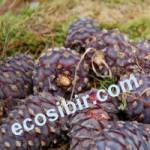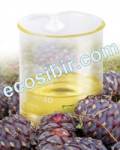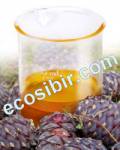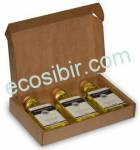Siberian Pine natural products (pinus sibirica)

Siberian cedar (Siberian pine, Lat. Pinus Sibirica) - it's beauty and national pride of Russia. Among the multitude of woody plants growing in central Russia, and especially in the north, the Siberian cedar occupies a special position. One can hardly find another such tree, which would contain as many positive qualities: hardiness, longevity, decorative, its health properties, life-giving value of the resin, anti-scorbutic properties of needles, medicinal and nutritional properties of seeds (nuts). Siberian pine - natural pharmacist.
Siberian cedar - conifer, evergreen, large slender, photophilous tree up to 40 m, with dense crown and thick branches. Needles of dark green with a glaucous bloom, 6-14 cm long, soft, growing bundles of five needles in the beam. Siberian cedar begins to bear fruit in an average of 60 years, sometimes later. The strobiles are large, elongated, ovoid, at first purple, then brown, 5-8 cm wide, a length of 13 centimeters. Cones ripen within 14-15 months. Each cone contains from 30 to 150 nuts (pine seeds), nuts are large. Siberian pine nuts - contain a range of useful biologically active substances: vitamins, fatty acids, amino acids, used in food and used as raw materials for Siberian Pine nut oil.
Siberian pine wood is soft, with a pleasant smell, has long been highly valued in a production variety of products and musical instruments. Their cedar needles get essential cedar oil. Siberian Pine resin called oleoresin for its beneficial effects on the human body and the therapeutic effect.
Siberian Cedar - one of the most ancient pine trees of the family (about 100 million years), reaches the age of 400 years, although more common pine at the age of 200-250 years. In favorable conditions, cedar lived to 800 years to 80 years actively collects moisture and energy from the soil after 80 - gives it.











